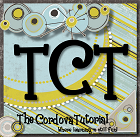Middle School Forensics & Critical Thinking
In this 30-week, 1 ½ hour class, we will use lots of activities and curriculum to hone our skills in critical thinking as well as investigate forensic science!
Crime stories, logic problems, detective inductive and deductive thinking and more! One of the curriculums we will be using is Critical Thinking Detectives (various levels). These cases develop critical thinking skills by requiring students to carefully read to determine what information in the case description and witness and suspect statements is legitimate evidence, and what is just opinion or irrelevant information. All of the cases require students to synthesize information from different sources to determine which suspects are innocent or guilty. The entertaining crime cases also develop observation skills, reading comprehension, and deductive and inductive thinking skills. The focus of these activities is to teach students to identify and evaluate evidence–the very heart of critical thinking.
We will also be investigating the crimes at Lake Iwannafisha with the award-winning curriculum from The Critical Thinking Co. Something is Fishy at Lake Iwannafisha! Students work as police detectives individually, or in small teams, to solve this fun and engaging crime mystery. Students begin by learning about different types of forensic evidence such as fingerprints, ballistics, handwriting, and more. Using witnesses’ statements, police reports, and forensic evidence lab reports, students must apply their critical thinking skills and forensic knowledge to solve this case. As with any investigation, students will need to make inferences and deal with the reality that not all loose ends can be tied up. Students determine the path of their investigation. Will they ask their police supervisor (that would be me) to see a specific witness statement? If so, they will need to determine which information from the statement will be helpful to the investigation. Does the information lead them to another clue? Could the witness really be a suspect? Does this person have an alibi? Do they ask for a Ballistics, Fingerprint, or Handwriting Report? These preliminary reports require students to use their forensic knowledge to analyze the information in the report, draw conclusions based on the content in the preliminary report, and record their findings in a final lab report. Their conclusions on the final reports will point them in the direction of the guilty parties.
We will use these books as springboard to learn, discuss and participate in hands on activities about ballistics, fingerprints, chromatography, questioned documents, crime scenes, forensic anthropology and more! I have taught forensics to high schoolers for 9 years and I am excited to bring it to middle school! (But don’t worry, there isn’t any inappropriate sexual crimes or evidence discussed.)
This is an exciting, hands-on introduction into the world of forensic science. This middle school class is an independent curriculum from the high school forensics course but lays a strong, complimentary foundation for future studies in forensic science. Students can take both in their education journey and have a multi-faceted understanding of forensics and critical thinking!
I am excited to make this a fun and engaging class while developing the students’ love for learning and of course, science!
All supplies will be provided. No curriculum needed. Students need a three-ring binder with dividers and paper. I will provide gloves for labs and activities when needed. Students do need access to Schoology at home.
Class Homework Requirements: There will be some homework that could include research, reading over material, lab reports, PowerPoints and quizzes on Schoology.
Thursday
Time: 9:00-10:30
Grades: 6-8
Cost: $395
Supply Fee: $85
Tutor: Andrea Reese
